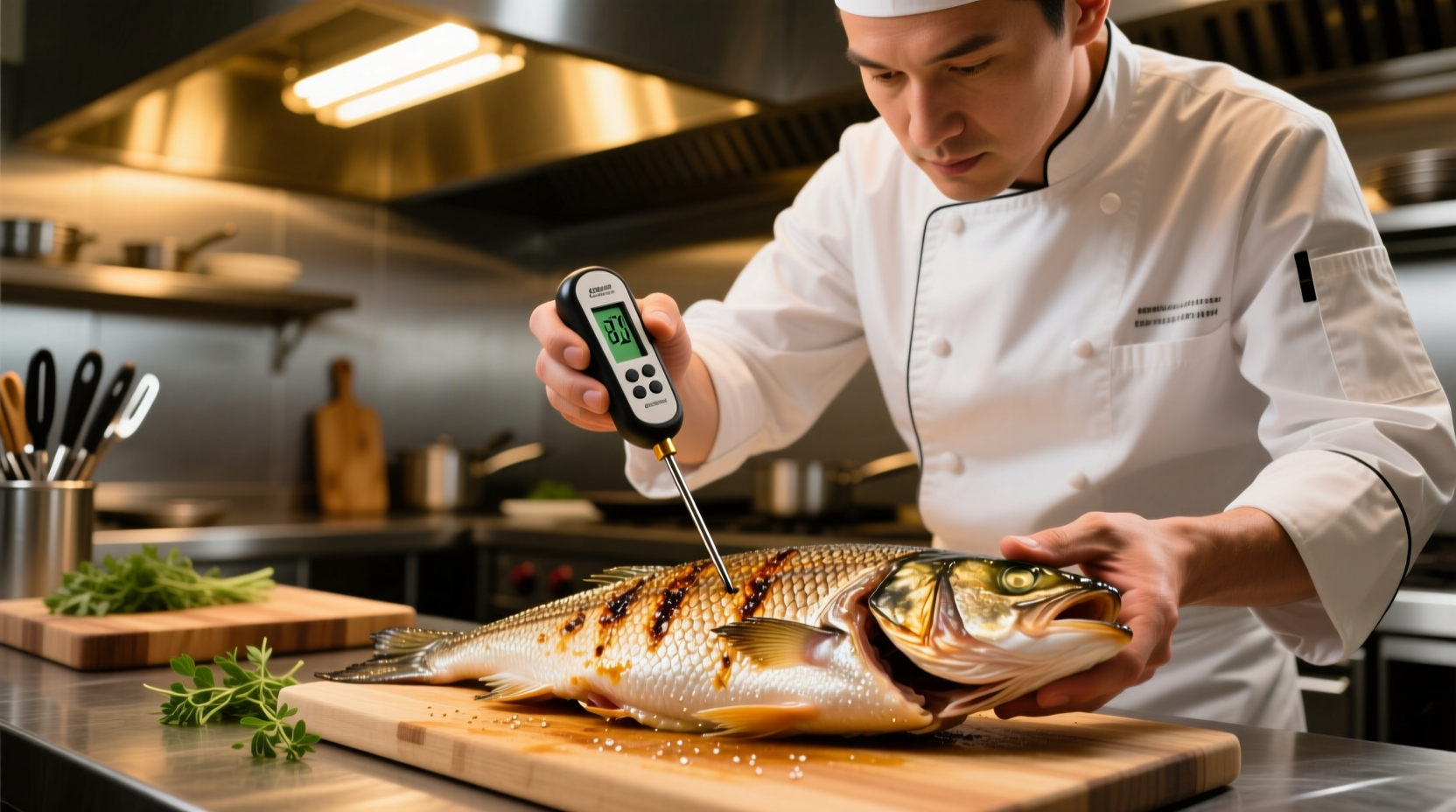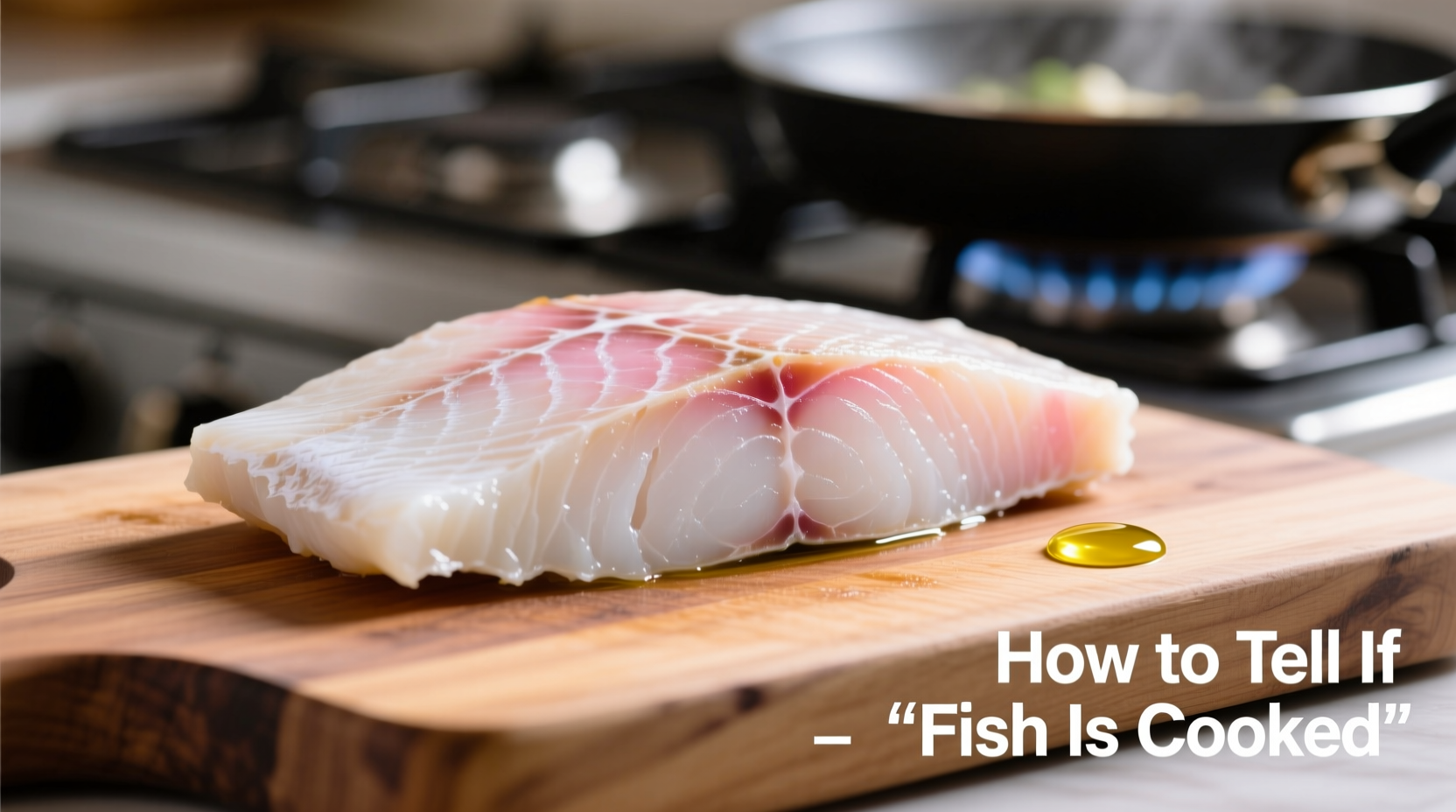Your Complete Guide to Perfectly Cooked Fish
Nothing ruins a beautifully prepared fish dish like undercooking or overcooking. Getting fish perfectly cooked requires understanding multiple sensory indicators that work together. This guide provides professional techniques that eliminate guesswork, ensuring restaurant-quality results every time you cook fish at home.
Why Proper Fish Cooking Matters
Undercooked fish poses food safety risks, while overcooked fish becomes dry and loses its delicate flavor. The FDA recommends cooking fish to a minimum internal temperature of 145°F (63°C) to destroy harmful bacteria and parasites. However, temperature alone doesn't tell the whole story—texture and appearance provide equally important clues.
The Five Reliable Methods to Check Fish Doneness
1. The Visual Transformation Test
Fresh raw fish has a translucent, almost glassy appearance. As it cooks, the proteins denature and coagulate, causing the flesh to turn opaque. Start checking fish about two-thirds through the estimated cooking time:
- White fish (cod, halibut, haddock): Changes from translucent to pure white
- Oily fish (salmon, mackerel): Transitions from deep red/orange to lighter pink
- Shellfish (shrimp, scallops): Turns from translucent to opaque white
Stop cooking when the fish is just opaque throughout. Remember that fish continues cooking from residual heat after removal from the heat source—a phenomenon called carryover cooking.
2. The Fork Flaking Technique
This classic chef's method works for most fish varieties. Gently insert a fork at the thickest part of the fish at a 45-degree angle, then twist slightly:
- Perfectly cooked fish will flake easily but still hold together
- Undercooked fish resists flaking and remains translucent
- Overcooked fish separates into dry, crumbly pieces
This method works best with firm-fleshed fish like salmon, tuna, and swordfish. For more delicate fish like sole or flounder, use the touch test instead.
3. The Internal Temperature Check
For absolute precision, use an instant-read thermometer. Insert it into the thickest part of the fish, avoiding bones:
- 145°F (63°C): FDA recommended minimum temperature for safety
- 125-130°F (52-54°C): Preferred for medium-rare tuna or salmon (with sushi-grade fish only)
- 135-140°F (57-60°C): Ideal for most home cooking—safe while preserving moisture
According to the USDA Food Safety and Inspection Service, fish is safe to eat when it reaches 145°F or shows visual signs of doneness. For thicker cuts, check multiple spots as heat distribution varies.
| Testing Method | Best For | Limitations | Reliability |
|---|---|---|---|
| Visual Transformation | All fish types | Difficult with dark-fleshed fish | ★★★★☆ |
| Fork Flaking | Firm fish (salmon, tuna) | Not suitable for delicate fish | ★★★★☆ |
| Temperature Check | All cooking methods | Requires thermometer | ★★★★★ |
| Touch Test | Delicate fish (sole, flounder) | Requires practice | ★★★☆☆ |
| Timing Guidelines | Consistent thickness | Variations in heat sources | ★★★☆☆ |
4. The Touch Test for Delicate Fish
For fragile fish like sole or flounder that fall apart when flaked, use the touch test. Gently press the thickest part with your finger:
- Raw: Feels soft and leaves an indentation
- Perfectly cooked: Springs back slightly with firm yet yielding resistance
- Overcooked: Feels stiff and doesn't yield to pressure
This method requires practice but becomes intuitive with experience. Start checking fish about 2 minutes before the minimum cooking time.
5. Timing Guidelines by Cooking Method
While timing alone isn't reliable due to variables like thickness and starting temperature, these guidelines provide a starting point. Cook fish for approximately 10 minutes per inch of thickness at the thickest point:
- Pan-searing: 3-4 minutes per side for 1-inch thick fillets
- Baking: 12-15 minutes at 400°F (200°C)
- Grilling: 6-8 minutes per side over medium heat
- Poaching: 8-10 minutes in gently simmering liquid
Always verify with another method, as factors like oven accuracy and grill heat distribution affect cooking times. Thicker cuts require lower heat for longer periods to cook through without burning the exterior.

Avoiding Common Fish Cooking Mistakes
Even experienced cooks make these preventable errors that compromise fish quality:
Overcooking Due to Carryover Cooking
Fish continues cooking after removal from heat. Remove fish from the heat source when it's just slightly underdone, as residual heat will raise the temperature 5-10 degrees. This prevents the dry, chalky texture of overcooked fish.
Starting with Cold Fish
Bring fish to room temperature for 15-20 minutes before cooking. Cold fish from the refrigerator cooks unevenly, with the exterior overcooking before the center reaches proper temperature.
Ignoring Fish Type Differences
Not all fish cook the same. Oily fish like salmon tolerate higher temperatures better than lean fish like cod. Shellfish like shrimp and scallops cook much faster than finfish. Adjust methods based on the specific fish you're preparing.
Special Considerations for Different Fish Types
Certain fish varieties require special attention to achieve perfect doneness:
- Salmon: Cook to 125-130°F for medium-rare (if using sushi-grade) or 135-140°F for medium. The center should still appear slightly translucent.
- Tuna: Often served rare (115°F) or medium-rare (125°F) when seared. Fully cooked tuna becomes dry and loses its delicate flavor.
- Shellfish: Shrimp and scallops cook extremely quickly—usually 2-3 minutes per side. They're done when opaque throughout but still tender.
- Whole fish: Check doneness at the thickest part behind the head and near the tail. Whole fish takes longer to cook than fillets.
When Visual Cues Can Be Misleading
Several factors can make visual doneness indicators unreliable:
- Dark-fleshed fish like mackerel don't show the same opacity change as white fish
- Marinades and sauces can mask visual changes in the fish
- Smoked or cured fish already appears cooked regardless of temperature
- Very thin fillets may appear opaque before reaching safe temperatures
In these situations, always verify with a thermometer for food safety. The FDA provides specific guidelines for different fish preparations at fda.gov.
Perfect Fish Every Time: Pro Tips
Professional chefs use these techniques to ensure consistent results:
- Use multiple indicators: Combine temperature check with visual and texture tests
- Check early and often: Start testing 2-3 minutes before expected doneness
- Rest before serving: Let fish rest 3-5 minutes after cooking for more even heat distribution
- Invest in a good thermometer: A quality instant-read thermometer pays for itself in perfect results
- Know your heat source: Gas, electric, and induction cooktops have different heating characteristics
Food Safety Reminders
While perfectly cooked fish is delicious, safety should always come first. The Centers for Disease Control and Prevention reports that undercooked fish can harbor parasites like Anisakis and bacteria including Salmonella and Vibrio. When in doubt about doneness, especially with fish intended for vulnerable populations (children, elderly, immunocompromised individuals), cook to the full 145°F recommended by food safety authorities.
Conclusion
Telling when fish is perfectly cooked combines science and sensory evaluation. By understanding the visual, textural, and temperature indicators—and how they work together—you'll consistently achieve moist, flavorful fish that's safe to eat. Start with the thermometer method for reliability, then develop your visual and tactile skills through practice. Remember that slightly underdone is better than overdone, as fish continues cooking off the heat. With these techniques, you'll gain confidence in preparing fish using any cooking method.











 浙公网安备
33010002000092号
浙公网安备
33010002000092号 浙B2-20120091-4
浙B2-20120091-4